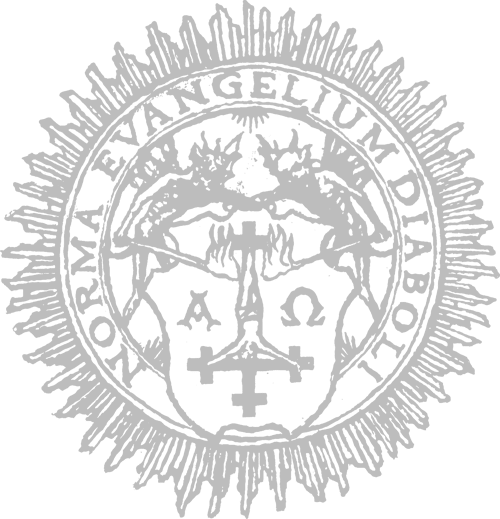VAFURLOGI
During the couple of years following the release of the impressive Revelations of the Red Sword, there was significant momentum around SVARTIDAUÐI. Shows across Europe followed the acclaimed release of that album… and then, after a while, it became clear that the band had been laid to rest.
Would you care to share some insights regarding your state of mind at that time?
Þórir – We had gone through a whirlwind few years, life in the SVARTIDAUÐI camp was always quite chaotic and plenty of debauchery on the road which took its toll. We had been on an upward trajectory with some huge bookings on the horizon, and creatively we were full of ideas, but it was a double edged sword as it became harder and harder to make these ideas come to fruition given our hectic concert schedule. When Covid suddenly halted everything and wiped out all our bookings it gave us an opportunity for some reflection and introspection, we mutually agreed that we had been running on fumes for a while and that this was a fitting point to end the band. We were all extremely proud of our work on Revelations of the Red Sword and felt that it was a high note to end on, although we in turn decided to scrap about two albums worth of demos in various stages of completion. SVARTIDAUÐI was a unique and curious beast, we managed to capture a truly powerful essence but it was ultimately too volatile to tame.
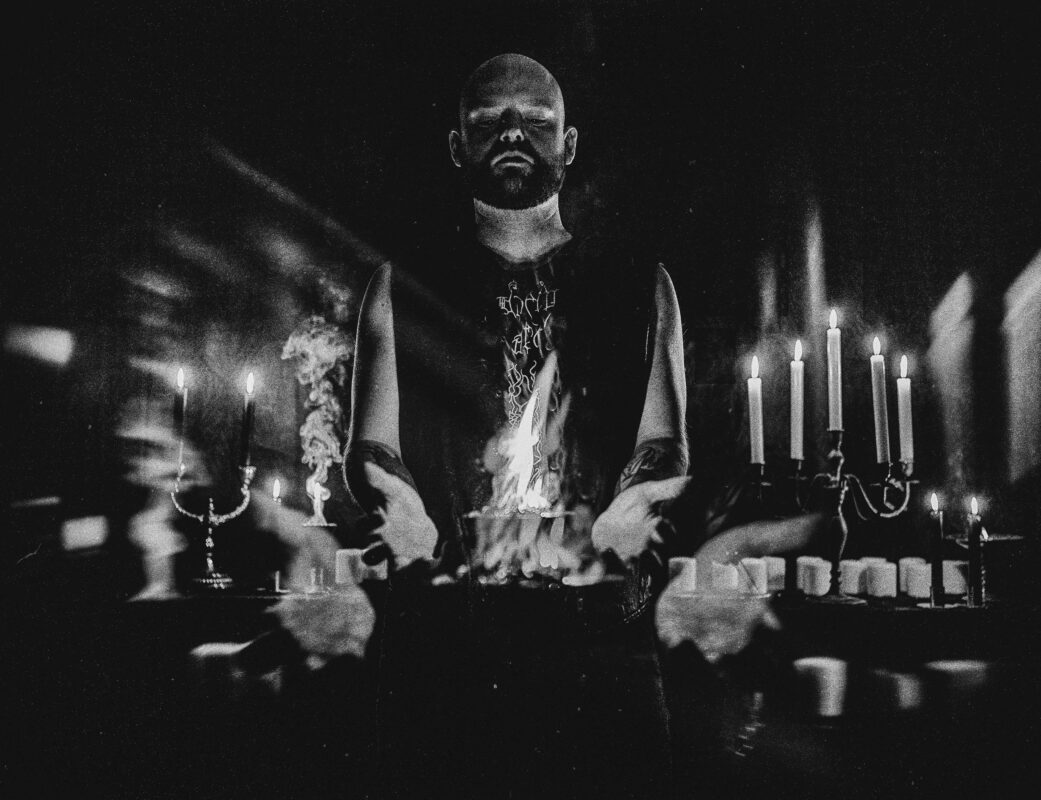
If we are to summarize the early stages of VAFURLOGI: the songs were written over several years, at a time when SVARTIDAUÐI was still fully active. Drum tracks were recorded at Stephen Lockhart’s EMISSARY STUDIO as early as 2020. The recording of Í vökulli áþján was eventually finalized in early 2024.
Roughly four years after SVARTIDAUÐI’s last shows, you are returning to the trenches with the release of VAFURLOGI’s debut album, Í vökulli áþján.
When did it dawn on you that you’d need a project like VAFURLOGI to express yourself fully? After all, you are also part of SINMARA.
Þórir – The history of VAFURLOGI can sound quite convoluted at first glance, but I guess the simplest way to present it is that it has been one of the pillars of my creative life for much of my songwriting career and has been cultivating in the shadows in parallel to my other projects for almost two decades now. The idea for this project was born organically after I had accumulated a few songs which didn’t fit musically into SVARTIDAUÐI, the earliest of which were written in 2007, and I needed an avenue to express this facet of my songwriting. With time the world of VAFURLOGI began to take shape, and the project developed its own characteristics as I started writing songs particularly for VAFURLOGI. The second VAFURLOGI album, which is currently almost fully recorded, contains mostly these early songs which were either written for SVARTIDAUÐI or part of the genesis of the project when its identity was taking shape. These early compositions were heavily influenced by the more melodic and symphonic black metal classics of the 90s that I grew up on, as well as the burgeoning movement of Orthodox Black Metal which had reinstated a certain fervour and spirit into a genre which had gone astray in the years prior. The rise of this movement was something I witnessed first hand and influenced me greatly in my formative years. A particular defining moment for me was seeing WATAIN and DISSECTION together in Berlin in 2004 when I was still a teenager, the spirit present there is yet unmatched.
I have had the great fortune of working in richly creative songwriting teams within my bands and I did indeed get to channel these tendencies partially through SINMARA in the following years as our style gradually became more traditional and melodic, and there are glimpses of them in SVARTIDAUÐI, but I still needed a project where I could freely express some of my more off-the-wall ideas. My aim was also for VAFURLOGI to incorporate comparatively more direct songwriting structures and arrangements than my other bands.
While the second VAFURLOGI album has unused early SVARTIDAUÐI compositions (including a song from our unfinished and cancelled debut album we recorded in 2008, as well as a song that was written for Revelations of the Red Sword), the first album paradoxically has newer compositions written mostly between 2018 and 2020. In the spring and summer of 2020 I was in quite a manic state of creativity and wrote the bulk of the first VAFURLOGI album as well as making final arrangements on the second one, and working extensively on the upcoming third SINMARA album. The drums for both albums were indeed tracked in December of 2020, and the following years have been spent finishing the recordings, writing lyrics and actually learning to perform metal vocals as that was a first for me.
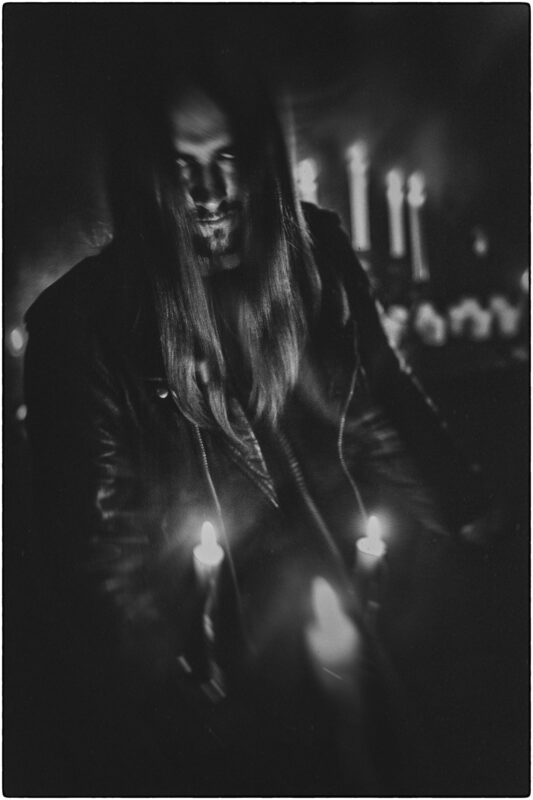
While the VAFURLOGI album is a continuation of your previous work, in that your identity as a songwriter is palpable throughout the songs, it also marks a brand new start. Does it feel rejuvenating to you, bringing the excitement and sense of conquest that often come with fresh beginnings and a blank slate? Are there specific horizons you intend to conquer with VAFURLOGI?
Þórir – It does feel very inspiring and exhilarating to venture on this new journey and go through the fundamental steps of establishing a new band even after having gone through quite a lot in this style of music. Suffice to say that I’m not at all jaded or disillusioned, in fact the aforementioned Covid standstill gave me an opportunity for some soul-searching when it comes to my musical endeavours, and my takeaway was that I started to sincerely miss even the most mundane things about making and playing music that one starts to take for granted and even see as a nuisance in the entitled state of being in a highly active band. So I made a conscious realisation to fully enjoy this passion that I have, and to keep pursuing it to the best of my abilities. As a result, it’s been highly rewarding to see my vision start to materialise and even the most mundane toil is something I cherish. Every step along the way has been a new threshold to conquer, even if a lot of it is something I have experienced before. One thing I’d like to specially mention here is that entering into the pantheon that is Norma Evangelium Diaboli had long been an inconceivable dream of mine, and achieving that filled me with a sense of pride, accomplishment and in fact bewilderment as NoEvDia has always been the gold standard for me and a sacred institution in Black Metal. Representing that banner motivates me greatly and gives me a very lofty ideal to aspire to.
–
As a matter of fact, VAFURLOGI has already been made concrete! Indeed, the band performed its first show at ASCENSION MMXXIV. You seem to be satisfied with your first show and the lineup you selected to stand by your side…
Þórir – The lineup I’ve amassed is absolutely stellar, I took great care in selecting the members and already at the first rehearsal as a full band it was evident how well that had paid off. All of the members are extremely dedicated, capable and experienced. Ragnar had actually drummed in SVARTIDAUÐI for a short period in 2007, so we had worked together before and he had even played one of the VAFURLOGI songs live back then as a SVARTIDAUÐI track. He’s one of the hardest working metal drummers out there and absolutely elite at what he does, so I was really fortunate he entered into the fold. He tracked the drums for the first two VAFURLOGI albums in a single afternoon back in December 2020, and has been an invaluable partner on this project. Eysteinn and Samúel have plenty of experience on stages here in Iceland and abroad, predominantly through their respective bands NYRST and VOLCANOVA, and they’ve both helped to elevate VAFURLOGI with their talent and dedication.
It was very fitting to unveil the project at ASCENSION, it’s always great to take part in that festival. The show went very well and we’re in good stead to carry on from there, and hungry for more. Our next show will be in Reykjavík on September 13th with our close allies MISÞYRMING and FORSMAN, as well as the young newcomers VAMPIRA. There are some plans taking shape for further performances and we’d like to venture abroad as well.
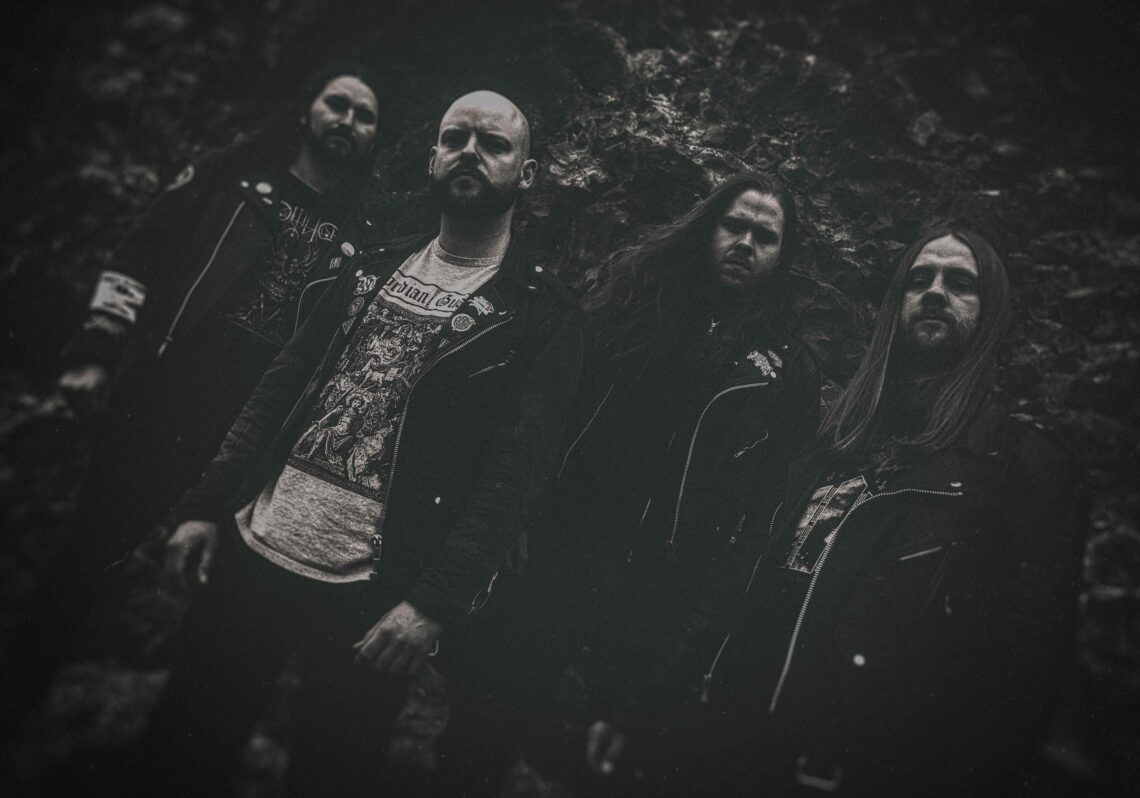
As previously mentioned, Stephen Lockhart was behind the mixing desk for the sessions of Í vökulli áþján. Your collaboration with him began well over a decade ago and has since expanded. You are, for example, part of REBIRTH OF NEFAST’s current live lineup. There are encounters in the life of a musician that make a clear difference; there is a before and an after. Is it fair to assume that your collaboration is of that essence? For context, Stephen made the conscious choice to move to Iceland from Ireland.
Þórir – Stephen is indeed one of my closest collaborators but also one of my closest friends. We’ve worked on countless projects together, in addition to producing almost every album in my discography I’ve played with him in SINMARA and REBIRTH OF NEFAST. I think the way you describe it is fitting, and we have undoubtedly both influenced each other to a great degree. We sometimes have differing opinions creatively but that just works as a healthy challenge. Stephen’s importance to Black Metal in Iceland can’t be overstated, be it through ASCENSION FESTIVAL, STUDIO EMISSARY or his own musical projects he has been instrumental in every aspect of it.
–
Much has been written about Icelandic Black Metal. While good new bands continue to emerge here and there on this rotten globe, it is my understanding that Icelandic Black Metal was one of the last times— alright, along with some turmoil from Trondheim—that we witnessed a collective phenomenon whose value, in hindsight, can hardly be negated. And with SVARTIDAUÐI, you were at the forefront of this phenomenon.
Þórir – I appreciate those words greatly and it’s definitely not something I take for granted. During my time in SVARTIDAUÐI we were quite averse to the moniker of “Icelandic black metal”, as we’ve never let any sort of nationalistic pride enter into our minds and we felt the term was spawned as a cheap buzzword from hipsters seeking the newest exotic obscure scene to latch onto. In later years I’ve personally become more appreciative of the fact that what we have been doing over here is actually quite remarkable, and while I’ve been less active myself in recent years I’ve been able to watch some of the other bands from around here do extraordinary things from more of an outside perspective. So in that respect I think having such a strong and creative metal scene here on this island is not to be taken for granted. Taking part in recent editions of ASCENSION has also painted a clear picture of how strong the bands here are, and it’s really inspiring to be part of such an environment.
–
Before your generation’s contributions, coming from Iceland, I can only recall FLAMES OF HELL’s Fire and Steel album from 1987, which could qualify as proto-Black Metal, and SÓLSTAFIR’s Til Valhallar MCD from 1996, which one could arguably describe as early ENSLAVED-influenced. Am I missing something? Did you feel a sense of lineage with this arguably meager number of predecessors? And beyond Reykjavik, what is your lineage?
Þórir – There is not much to add here, when I started out making Black Metal back in 2002 with my childhood band GRIEF there was no Black Metal scene to speak of over here. There was a very active Hardcore scene but the Black Metal scene was mostly some scattered smaller bands around the demo level, some had come in the years prior such as ÁMSVARTNIR and some were active around that same time such as MYRKRAFÖL (later WITHERED and ATRUM) and Bölvættur. However there was one domestic band which had an influence and provided an example; local legends MYRK were at their peak around the time and they were actually the first metal band I saw in concert back in early 2003 at a legendary gig complete with self mutilation on stage. That concert and their highly atmospheric 2002 promo tape was an early inspiration for me.
It’s hard for me to trace lineages outside of Iceland in terms of where I or we have felt we belong, as we have always felt a bit isolated which has been both to our advantage and detriment. On one hand I imagine it can be creatively limiting to automatically be part of a wider metal industry as can be found in mainland Europe but likewise every practical and logistical matter becomes much harder for us due to our geographical location.
Speaking of lineages in terms of influences is easier however. Beyond our shores my bands have all had various inspirations both within metal and other forms of music and art, but for VAFURLOGI the wellspring I’m drawing from is the more traditional and melodic form of mostly Scandinavian Black Metal such as early DISSECTION, SATYRICON, SORHIN, SETHERIAL, EMPEROR, RAGNAROK, ULVER, BLUT AUS NORD, DIMMU BORGIR, ENSLAVED, GODKILLER, ABIGOR, DODHEIMSGARD, OBTAINED ENSLAVEMENT to name a few, as well as more modern acts such as DEATHSPELL OMEGA, WATAIN, FUNERAL MIST, BEHEXEN, BAPTISM, even RHINOCERVS and some associated projects. HAVUKRUUNU is a band whose phenomenal album Uinuos Syömsein Sota had a huge impression on me during the period when I was putting the finishing touches on Í vökulli áþján. In rare instances my love for classic heavy metal can be discerned as well I believe. Bands such as MERCYFUL FATE, KING DIAMOND, RUNNING WILD, LORDIAN GUARD, and of course MAIDEN and PRIEST are very close to my heart.
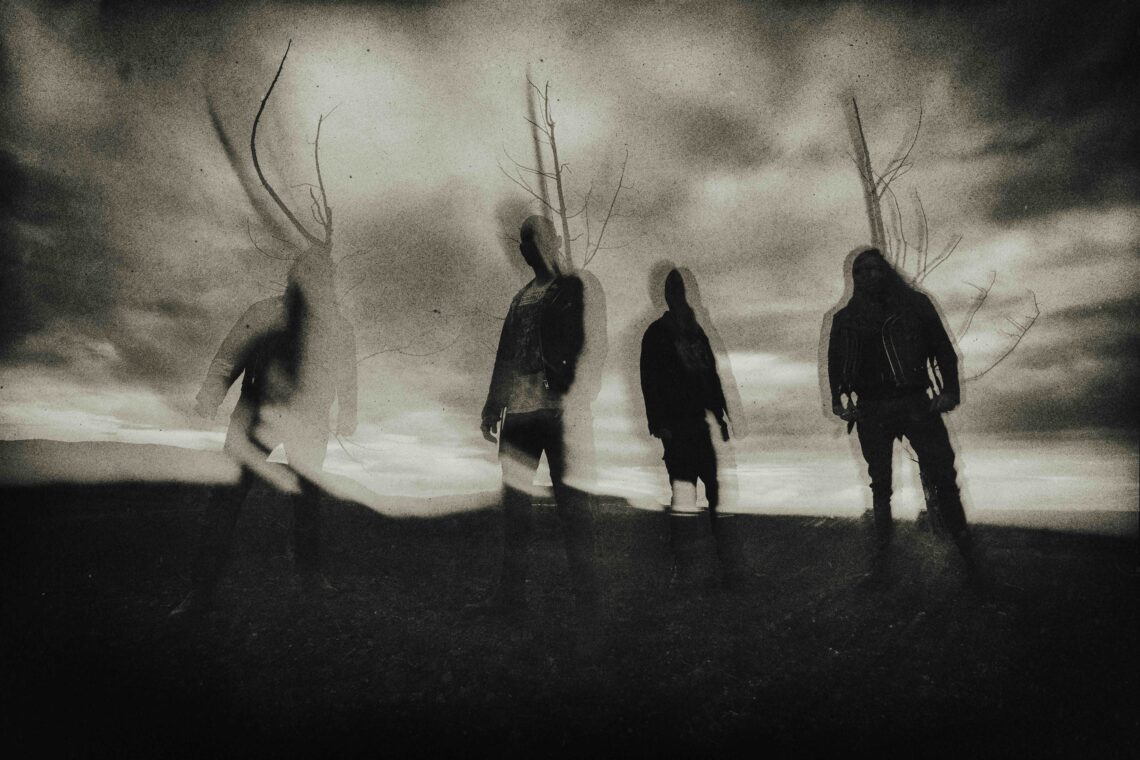
Can you share some memories of when music became an important part of your life? When did you feel the urge to become a musician yourself? And most importantly: in a genre like Black Metal, which theoretically demands significant commitment—one that goes beyond mere music and requires a willingness to venture into… let’s call it hostile territories…
Þórir – I never had any formal musical education as a child, but at 12 years old I joined my first band along with some classmates. Said band, called Líkþrá (Leprosy), only lasted one rehearsal in one of the member’s garage using gear from his father. However me and my best friend at the time soon after discovered Black Metal and that was where my musical obsession began, being absolutely entranced by the seminal works of DARKTHRONE, BURZUM, IMMORTAL, DIMMU BORGIR’s For All Tid etc. We quickly formed our first band, GRIEF, and released two extremely primitive demos created in my friend’s bedroom. The rest of my school years we were alone against the world so to speak, totally reclusive and antisocial in our adolescent Black Metal universe. As I grew older I opened my horizons somewhat but have always had the same passion for Black Metal and drive to make music.
–
I have been involved with Black Metal for three decades. Unsurprisingly, over the years I’ve witnessed appalling lows for the genre, but also exciting moments that—nostalgia be damned—deserve unrestrained applause and prove how much magic this genre can still summon. Both from new blood and from veterans such as ABIGOR, who continue to get better and better, as the stunning Taphonomia Aeternitatis proves.
Between radical conservatism and unlimited revolt, how would you sketch the genre’s future?
Þórir – I have quite conflicting views on this matter, as I believe myself to be a pretty open minded individual but yet I’m very much a traditionalist when it comes to Black Metal. I have an idealistic view of Black Metal as an artform tracing its roots back to VENOM, BATHORY, MERCYFUL FATE, SODOM and the likes, with its essence then being shaped in large part by Euronymous and the works which his enormous influence culminated in around the globe. There may have been offshoots and sub-genres since but most of them I have very little interest in, and some of the alleged sub-genres today I simply don’t understand or can’t take seriously. I’m possibly too old and elitist to stake a claim in this subject, but however in theory I have nothing against the broadening of the horizons of this genre which can be at its best transcendental and at its worst absolute parody. I simply feel that what defines Black Metal is a certain spirit which is very hard to capture, and often the less you stray away from the path the better. There is sometimes an overemphasis on originality, instead of purity or quality. Being unoriginal or even derivative shouldn’t be a taboo, this genre has existed for 30-40 years depending on your definition, so most innovations have probably been tried already. Some recent favourites of mine include SINIRA’s The Everlorn which is shameless DISSECTION worship verging on plagiarism at times, but it is full of spirit and creativity. WARMOON LORD’s Battlespells album is another album which isn’t breaking any new ground at all, but still feels truly inspired. And the aforementioned HAVUKRUUNU album goes even further, as I believe they are one of those rare bands that can easily navigate motifs and tropes and yet form their own identity and take on the genre. It’s a very subtle subject, and there are definitely bands that are capable of evoking this profound spirit while stretching the boundaries somewhat. Often I feel these are the bands and artists which don’t consider themselves black metal at all, but they perhaps inform this genre from the outside, such as ALUK TODOLO or WOLVENNEST.
Speaking for myself creatively, with SVARTIDAUÐI we never wanted to feel boxed in by any sort of terms and we were not concerned with strictly being a Black Metal band. When it comes to VAFURLOGI however, I will gladly accept the moniker. VAFURLOGI is in a way my ode to Black Metal, but within those stylistic boundaries there are no limitations to true creativity and inspiration. In fact, I feel the early to mid 90s global Black Metal scene has been unfairly maligned for being myopic while it was actually absolutely ripe with innovation and unfettered creativity. That creativity is something that can’t be faked, it’ll always be present in certain artists of all genres and can be transmitted through the most traditional of Black Metal just as any other style or form of art.
